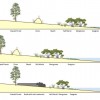 Sea-level rise may have significant effects on Florida’s coastal ecosystems. These ecosystems are the foundation upon which much of Florida’s natural beauty and economy are based. Understanding what changes may happen in the future can help us plan for those changes and, to the extent possible, lessen the impacts of those changes. This 5-page fact sheet was written by Whitney Gray, and published by the UF Department of Sea Grant, October 2013.
Sea-level rise may have significant effects on Florida’s coastal ecosystems. These ecosystems are the foundation upon which much of Florida’s natural beauty and economy are based. Understanding what changes may happen in the future can help us plan for those changes and, to the extent possible, lessen the impacts of those changes. This 5-page fact sheet was written by Whitney Gray, and published by the UF Department of Sea Grant, October 2013.
http://edis.ifas.ufl.edu/sg131
Category: Ecosystems & Species
Native Plants That Benefit Native Wildlife in the Florida Panhandle
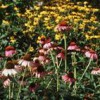 The key to enhancing wildlife (and attracting it to your property) is to provide the resources wildlife need. This means supplying food, water, and cover within the space you own and manage. Because the needs of each wildlife species for food and cover vary from one season to the next, a mix of plant species is required to meet the needs of a species all year round. And because each species has different needs, attracting and maintaining a wide variety of wildlife year round requires a wide diversity of plants. A property owner interested in attracting wildlife should nurture a wide variety of native plants to ensure that there is a large assortment of food and cover options available all the time. This 8-page fact sheet was written by Holly K. Ober and Gary W. Knox, and published by the UF Department of Wildlife Ecology and Conservation, October 2013.
The key to enhancing wildlife (and attracting it to your property) is to provide the resources wildlife need. This means supplying food, water, and cover within the space you own and manage. Because the needs of each wildlife species for food and cover vary from one season to the next, a mix of plant species is required to meet the needs of a species all year round. And because each species has different needs, attracting and maintaining a wide variety of wildlife year round requires a wide diversity of plants. A property owner interested in attracting wildlife should nurture a wide variety of native plants to ensure that there is a large assortment of food and cover options available all the time. This 8-page fact sheet was written by Holly K. Ober and Gary W. Knox, and published by the UF Department of Wildlife Ecology and Conservation, October 2013.
http://edis.ifas.ufl.edu/uw384
Common Sharks of Florida
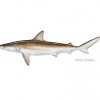 Florida’s shark population is diverse and includes species that range in size from only a few feet to more than 40 feet in total length. Experts caution sea-goers to beware of sharks 6 feet or longer due to the damage they can cause in a single bite. Among the species that grow to this size and have been known to attack humans are bull sharks, tiger sharks and great white sharks. Whites are seasonal visitors to Florida waters, and bulls and tigers are year-round residents, along with these other common species. This 4-page fact sheet was written by Florida Sea Grant, and published by the UF Department of Sea Grant, September 2014.
Florida’s shark population is diverse and includes species that range in size from only a few feet to more than 40 feet in total length. Experts caution sea-goers to beware of sharks 6 feet or longer due to the damage they can cause in a single bite. Among the species that grow to this size and have been known to attack humans are bull sharks, tiger sharks and great white sharks. Whites are seasonal visitors to Florida waters, and bulls and tigers are year-round residents, along with these other common species. This 4-page fact sheet was written by Florida Sea Grant, and published by the UF Department of Sea Grant, September 2014.
http://edis.ifas.ufl.edu/sg062
Corn wireworm Melanotus communis Gyllenhal (Insecta: Coleoptera: Elateridae)
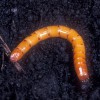 Insects in the family Elateridae are commonly known as click beetles. Their name comes from the clicking sound they make while attempting to right themselves after falling or being placed on their backs. The larvae of click beetles are called wireworms. The corn wireworm is a serious agricultural pest and was added to the EPPO A1 action list of quarantine pests in 2002. This 6-page fact sheet was written by Harsimran K. Gill, Gurminder Chahil, Gaurav Goyal, Jennifer L. Gillett-Kaufman and Ronald Cherry, and published by the UF Department of Entomology and Nematology, January 2014.
Insects in the family Elateridae are commonly known as click beetles. Their name comes from the clicking sound they make while attempting to right themselves after falling or being placed on their backs. The larvae of click beetles are called wireworms. The corn wireworm is a serious agricultural pest and was added to the EPPO A1 action list of quarantine pests in 2002. This 6-page fact sheet was written by Harsimran K. Gill, Gurminder Chahil, Gaurav Goyal, Jennifer L. Gillett-Kaufman and Ronald Cherry, and published by the UF Department of Entomology and Nematology, January 2014.
http://edis.ifas.ufl.edu/in1025
Hydrilla leafcutter moth (unofficial common name) Parapoynx diminutalis Snellen (Insecta: Lepidoptera: Crambidae)
 Parapoynx diminutalis Snellen is an adventive Asian moth with an aquatic larval stage. The moth is found associated with a variety of water bodies including river backwaters, lakes, and ponds. The aquatic larvae commonly attack hydrilla and other aquatic plants. The moth was identified in 1971 in India and Pakistan during scouting trips to attempt to determine potential biological control agents for hydrilla. Despite having potential for hydrilla destruction, the moth was declared to be a generalist feeder and unsuitable for release into U.S. water bodies for hydrilla control. But the moth was later found in Florida in 1976 by United States Department of Agriculture technicians who were testing herbicides for hydrilla control. The larvae found on hydrilla were observed to be eating the invasive weed. The pathway, method, or time of the moth’s arrival remains unknown. This 5-page fact sheet was written by Julie Baniszewski, Emma N.I. Weeks, and James P. Cuda, and published by the UF Department of Entomology and Nematology, January 2014.
Parapoynx diminutalis Snellen is an adventive Asian moth with an aquatic larval stage. The moth is found associated with a variety of water bodies including river backwaters, lakes, and ponds. The aquatic larvae commonly attack hydrilla and other aquatic plants. The moth was identified in 1971 in India and Pakistan during scouting trips to attempt to determine potential biological control agents for hydrilla. Despite having potential for hydrilla destruction, the moth was declared to be a generalist feeder and unsuitable for release into U.S. water bodies for hydrilla control. But the moth was later found in Florida in 1976 by United States Department of Agriculture technicians who were testing herbicides for hydrilla control. The larvae found on hydrilla were observed to be eating the invasive weed. The pathway, method, or time of the moth’s arrival remains unknown. This 5-page fact sheet was written by Julie Baniszewski, Emma N.I. Weeks, and James P. Cuda, and published by the UF Department of Entomology and Nematology, January 2014.
http://edis.ifas.ufl.edu/in1024
Erythrina leafminer (suggested common name); Leucoptera erythrinella Busck, 1900 (Insecta: Lepidoptera: Lyonetiidae)
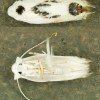 The erythrina leafminer is a member of the genus Leucoptera, which are leaf borers that can cause severe damage to plant crops, such as coffee or apples. Even though these moths are 1/20 to 1/10 the size of an average moth, they can cause serious damage. Leucoptera erythrinella is a pest of the coral bean and other members of the genus Erythrina. The larvae feed inside the leaves, making elaborate and characteristic mines, which from a distance appear to be discolorations of the leaf itself. This 5-page fact sheet was written by Andrei Sourakov, and published by the UF Department of Entomology and Nematology, January 2014.
The erythrina leafminer is a member of the genus Leucoptera, which are leaf borers that can cause severe damage to plant crops, such as coffee or apples. Even though these moths are 1/20 to 1/10 the size of an average moth, they can cause serious damage. Leucoptera erythrinella is a pest of the coral bean and other members of the genus Erythrina. The larvae feed inside the leaves, making elaborate and characteristic mines, which from a distance appear to be discolorations of the leaf itself. This 5-page fact sheet was written by Andrei Sourakov, and published by the UF Department of Entomology and Nematology, January 2014.
http://edis.ifas.ufl.edu/in1023
Stewardship Ecosystem Services Study Series: Assessing Forest Water Yield and Purification Ecosystem Services in the Lower Suwannee River Watershed, Florida
 Land-use decisions and ecosystem characteristics affect the amounts of nutrients that end up in water bodies and the ability of the land to provide ecosystem services. Water quality is also highly valued by Florida forest landowners and managers. So, understanding the role of land use and forest cover and types, management practices, and conservation programs in reducing nutrient pollution will allow landowners, forest managers, and policy makers to make informed and better management decisions. In this 6-page fact sheet, we present the results of a study that used easily available models and information to assess the role of forests in providing ecosystem services, including water quality improvement or purification. Specifically, this assessment used available geospatial data and the InVEST Water Purification model to estimate how forest vegetation and soils purify water through the retention, and subsequent export, of nitrogen and phosphorus polluted runoff. Written by Sonia Delphin, Francisco J. Escobedo, Amr Abd-Elrahman, Alison E. Adams, Jackie Martin, Ronald Cademus, and published by the UF Department of School of Forest Resources and Conservation, January 2014.
Land-use decisions and ecosystem characteristics affect the amounts of nutrients that end up in water bodies and the ability of the land to provide ecosystem services. Water quality is also highly valued by Florida forest landowners and managers. So, understanding the role of land use and forest cover and types, management practices, and conservation programs in reducing nutrient pollution will allow landowners, forest managers, and policy makers to make informed and better management decisions. In this 6-page fact sheet, we present the results of a study that used easily available models and information to assess the role of forests in providing ecosystem services, including water quality improvement or purification. Specifically, this assessment used available geospatial data and the InVEST Water Purification model to estimate how forest vegetation and soils purify water through the retention, and subsequent export, of nitrogen and phosphorus polluted runoff. Written by Sonia Delphin, Francisco J. Escobedo, Amr Abd-Elrahman, Alison E. Adams, Jackie Martin, Ronald Cademus, and published by the UF Department of School of Forest Resources and Conservation, January 2014.
http://edis.ifas.ufl.edu/fr385
Necropsies of Reptiles: Recommendations and Techniques for Examining Invasive Species
 Captures and postmortem examinations, or necropsies, of invasive or nonnative animals may provide insight into the ecological impact of these invaders. Researchers should be able to perform necropsies when an opportunity arises to examine nonnative species for study. While the techniques described serve as a guide to necropsy of all reptiles, we focus on exotic species found in south Florida. South Florida provides prime habitat for invasive reptiles such as Argentine black and white tegu and Burmese python, and these species are used to describe our techniques. This 26-page fact sheet was written by Seth C. Farris, Michiko A. Squires, Frank Ridgley, Emma Lavergne, Mitchell Serota, and Frank J. Mazzotti, and published by the UF Department of Wildlife Ecology and Conservation, September 2013.
Captures and postmortem examinations, or necropsies, of invasive or nonnative animals may provide insight into the ecological impact of these invaders. Researchers should be able to perform necropsies when an opportunity arises to examine nonnative species for study. While the techniques described serve as a guide to necropsy of all reptiles, we focus on exotic species found in south Florida. South Florida provides prime habitat for invasive reptiles such as Argentine black and white tegu and Burmese python, and these species are used to describe our techniques. This 26-page fact sheet was written by Seth C. Farris, Michiko A. Squires, Frank Ridgley, Emma Lavergne, Mitchell Serota, and Frank J. Mazzotti, and published by the UF Department of Wildlife Ecology and Conservation, September 2013.
http://edis.ifas.ufl.edu/uw382
Invasive Species of Florida’s Coastal Waters: The Red Lionfish (Pterois volitans) and Devil Firefish (P. miles)
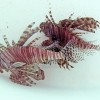 Two species of Indo-Pacific lionfish (Pterois volitans and P. miles) are the first reported non-native marine fish to become established in the Atlantic Ocean. Genetic studies indicate that lionfish in the Atlantic are likely all descendants of a few individuals, consistent with the widely held belief that lionfish were introduced into the Atlantic as a result of accidental or deliberate release of aquarium pets. Regardless of the method of introduction, the prolific spread of these invasive species in the Atlantic Ocean ecosystem is cause for concern. This 5-page fact sheet was written by Maia McGuire and Jeffrey HIll, and published by the UF Department of Sea Grant, January 2013.
Two species of Indo-Pacific lionfish (Pterois volitans and P. miles) are the first reported non-native marine fish to become established in the Atlantic Ocean. Genetic studies indicate that lionfish in the Atlantic are likely all descendants of a few individuals, consistent with the widely held belief that lionfish were introduced into the Atlantic as a result of accidental or deliberate release of aquarium pets. Regardless of the method of introduction, the prolific spread of these invasive species in the Atlantic Ocean ecosystem is cause for concern. This 5-page fact sheet was written by Maia McGuire and Jeffrey HIll, and published by the UF Department of Sea Grant, January 2013.
http://edis.ifas.ufl.edu/sg132
Psilido, Boreioglycaspis melaleucae Moore (Insecta: Hemiptera: Psyllidae)
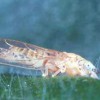 El árbol Melaleuca quinquenervia (Cav.) S. T. Blake (Myrtaceae), conocido como corteza de papel, es una especie invasora agresiva en varios ecosistemas del sur de Florida, incluyendo los Everglades. Melaleuca está considerado una plaga porque desplaza la vegetación nativa y degrada el hábitat de especies silvestres; además aumenta el peligro de incendios y puede causar problemas a la salud humana (Rayamajhi et al. 2002). El Departamento de Agricultura de los Estados Unidos (USDA) y el Servicio de Investigación Agrícola (ARS), bajo permiso federal y estatal, introdujeron el psílido Boreioglycaspis melaleucae en Florida en el Condado de Broward, en Febrero del 2002 como un agente potencial de control biológico de melaleuca. This 5-page fact sheet was written by Susan A. Wineriter, Susan E. Halbert, and James Cuda, and published by the UF Department of Entomology and Nematology, December 2013.
El árbol Melaleuca quinquenervia (Cav.) S. T. Blake (Myrtaceae), conocido como corteza de papel, es una especie invasora agresiva en varios ecosistemas del sur de Florida, incluyendo los Everglades. Melaleuca está considerado una plaga porque desplaza la vegetación nativa y degrada el hábitat de especies silvestres; además aumenta el peligro de incendios y puede causar problemas a la salud humana (Rayamajhi et al. 2002). El Departamento de Agricultura de los Estados Unidos (USDA) y el Servicio de Investigación Agrícola (ARS), bajo permiso federal y estatal, introdujeron el psílido Boreioglycaspis melaleucae en Florida en el Condado de Broward, en Febrero del 2002 como un agente potencial de control biológico de melaleuca. This 5-page fact sheet was written by Susan A. Wineriter, Susan E. Halbert, and James Cuda, and published by the UF Department of Entomology and Nematology, December 2013.
http://edis.ifas.ufl.edu/in1019
Sri Lankan weevil Myllocerus undecimpustulatus undatus Marshall
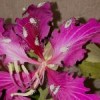 Myllocerus undecimpustulatus undatus Marshall, the Sri Lankan weevil, is a plant pest with a wide range of hosts. This weevil spread from Sri Lanka into India and then Pakistan where many subspecies of Myllocerus undecimpustulatus Faust are considered pests of more than 20 crops. In the United States, the Sri Lankan weevil was first identified on Citrus sp. in Pompano Beach a city in Broward County Florida. Three specimens were identified by Dr. Charles W. O’Brien, first as Myllocerus undecimpustulatus, a species native to southern India, and then again as Myllocerus undatus Marshall native to Sri Lanka, finally as Myllocerus undecimpustulatus undatus Marshall to show its status as a subspecies. This 4-page fact sheet was written by Anita Neal, and published by the UF Department of Entomology and Nematology, November 2013.
Myllocerus undecimpustulatus undatus Marshall, the Sri Lankan weevil, is a plant pest with a wide range of hosts. This weevil spread from Sri Lanka into India and then Pakistan where many subspecies of Myllocerus undecimpustulatus Faust are considered pests of more than 20 crops. In the United States, the Sri Lankan weevil was first identified on Citrus sp. in Pompano Beach a city in Broward County Florida. Three specimens were identified by Dr. Charles W. O’Brien, first as Myllocerus undecimpustulatus, a species native to southern India, and then again as Myllocerus undatus Marshall native to Sri Lanka, finally as Myllocerus undecimpustulatus undatus Marshall to show its status as a subspecies. This 4-page fact sheet was written by Anita Neal, and published by the UF Department of Entomology and Nematology, November 2013.
http://edis.ifas.ufl.edu/in1016
Rugose spiraling whitefly Aleurodicus rugioperculatus Martin (Hemiptera: Aleyrodidae)
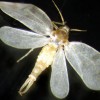 A new addition on the list of whitefly species found in Florida, Aleurodicus rugioperculatus Martin, was originally called the gumbo limbo spiraling whitefly, but is now named the rugose spiraling whitefly. Being a fairly new species to science – identified less than a decade ago, not much information is available about this pest. It is an introduced pest, endemic to Central America, and was reported for the first time in Florida from Miami-Dade County in 2009. Since then it has become an escalating problem for homeowners, landscapers, businesses, and governmental officials throughout the southern coastal counties of Florida. Feeding by this pest not only causes stress to its host plant, but the excessive production of wax and honeydew creates an enormous nuisance in infested areas. The presence of honeydew results in the growth of fungi called sooty mold, which then turns everything in the vicinity covered with honeydew black with mold. This 5-page fact sheet was written by Vivek Kumar, Cindy L. McKenzie, Catharine Mannion, Ian Stocks, Trevor Smith, and Lance S. Osborne, and published by the UF Department of Entomology and Nematology, October 2013.
A new addition on the list of whitefly species found in Florida, Aleurodicus rugioperculatus Martin, was originally called the gumbo limbo spiraling whitefly, but is now named the rugose spiraling whitefly. Being a fairly new species to science – identified less than a decade ago, not much information is available about this pest. It is an introduced pest, endemic to Central America, and was reported for the first time in Florida from Miami-Dade County in 2009. Since then it has become an escalating problem for homeowners, landscapers, businesses, and governmental officials throughout the southern coastal counties of Florida. Feeding by this pest not only causes stress to its host plant, but the excessive production of wax and honeydew creates an enormous nuisance in infested areas. The presence of honeydew results in the growth of fungi called sooty mold, which then turns everything in the vicinity covered with honeydew black with mold. This 5-page fact sheet was written by Vivek Kumar, Cindy L. McKenzie, Catharine Mannion, Ian Stocks, Trevor Smith, and Lance S. Osborne, and published by the UF Department of Entomology and Nematology, October 2013.
http://edis.ifas.ufl.edu/in1015
The UF/IFAS Assessment of Nonnative Plants in Florida’s Natural Areas: History, Purpose, and Use
 Nonnative invasive plant species pose a significant threat to Florida’s natural areas. The UF/IFAS Assessment of Nonnative Plants in Florida’s Natural Areas (hereafter, UF/IFAS Assessment) uses literature-based risk assessment tools to predict the invasion risk of both nonnative species that occur in the state as well as species proposed for introduction. The UF/IFAS Assessment team has evaluated more than 770 species, including 97 species proposed for introduction or new uses. The team is actively identifying and evaluating potentially problematic nonnative species (and sub-specific or hybrid taxa). Recommendations and supporting information from the UF/IFAS Assessment can be found at http://plants.ifas.ufl.edu/assessment. This 6-page fact sheet was written by Deah Lieurance, S. Luke Flory, Aimee L. Cooper, Doria R. Gordon, Alison M. Fox, Joan Dusky, and Linda Tyson, and published by the UF Department of Agronomy, November 2013.
Nonnative invasive plant species pose a significant threat to Florida’s natural areas. The UF/IFAS Assessment of Nonnative Plants in Florida’s Natural Areas (hereafter, UF/IFAS Assessment) uses literature-based risk assessment tools to predict the invasion risk of both nonnative species that occur in the state as well as species proposed for introduction. The UF/IFAS Assessment team has evaluated more than 770 species, including 97 species proposed for introduction or new uses. The team is actively identifying and evaluating potentially problematic nonnative species (and sub-specific or hybrid taxa). Recommendations and supporting information from the UF/IFAS Assessment can be found at http://plants.ifas.ufl.edu/assessment. This 6-page fact sheet was written by Deah Lieurance, S. Luke Flory, Aimee L. Cooper, Doria R. Gordon, Alison M. Fox, Joan Dusky, and Linda Tyson, and published by the UF Department of Agronomy, November 2013.
http://edis.ifas.ufl.edu/ag376
Eastern Bloodsucking Conenose, Triatoma sanguisuga (LeConte) (Hemiptera: Reduviidae: Triatominae)
 The eastern bloodsucking conenose belongs to the subfamily Triatominae, known as the kissing bugs. Despite their affectionate vernacular name, they are particularly threatening “assassin bugs” who require blood meals to survive and reproduce. They are a known vector of American trypanosomiasis (or Chagas Disease) in South America, a debilitating illness caused by the parasite Trypanosoma cruzi. This disease is a problem in South and Central America and has been detected in the United States, but has not been found in Florida. This 4-page fact sheet was written by John L. Capinera, and published by the UF Department of Entomology and Nematology, November 2013.
The eastern bloodsucking conenose belongs to the subfamily Triatominae, known as the kissing bugs. Despite their affectionate vernacular name, they are particularly threatening “assassin bugs” who require blood meals to survive and reproduce. They are a known vector of American trypanosomiasis (or Chagas Disease) in South America, a debilitating illness caused by the parasite Trypanosoma cruzi. This disease is a problem in South and Central America and has been detected in the United States, but has not been found in Florida. This 4-page fact sheet was written by John L. Capinera, and published by the UF Department of Entomology and Nematology, November 2013.
http://edis.ifas.ufl.edu/in1018
Why is your cup of coffee so expensive? Because of a tiny bark beetle!
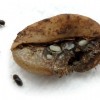 Sometimes an insect pest attacking crops in places as far away as Indonesia or Ethiopia can be very important to us here in Florida. One such insect is the coffee berry borer, Hypothenemus hampei Ferrari (Coleoptera: Curculionidae: Scolytinae), a tiny (1.5 mm) bark beetle that originated in the highlands of central Africa. It would probably remain one of the many inconspicuous little beetles in the tropics, if not for the choice of its host: seeds of several Coffea species. This 3-page fact sheet was written by Jiri Hulcr, and published by the UF Department of School of Forest Resources and Conservation, October 2013.
Sometimes an insect pest attacking crops in places as far away as Indonesia or Ethiopia can be very important to us here in Florida. One such insect is the coffee berry borer, Hypothenemus hampei Ferrari (Coleoptera: Curculionidae: Scolytinae), a tiny (1.5 mm) bark beetle that originated in the highlands of central Africa. It would probably remain one of the many inconspicuous little beetles in the tropics, if not for the choice of its host: seeds of several Coffea species. This 3-page fact sheet was written by Jiri Hulcr, and published by the UF Department of School of Forest Resources and Conservation, October 2013.
http://edis.ifas.ufl.edu/fr382
Identification and Control of Coral Ardisia (Ardisia crenata): A Potentially Poisonous Plant.
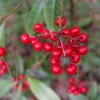 Coral ardisia, also known as coral berry, spice berry, and scratchthroat, was introduced to Florida in the early 1900’s for ornamental purposes. Since then, it has escaped cultivation, and it is found in hardwood hammocks and other moist, natural-wooded areas and grazing lands. Although there is no published literature supporting the theory that coral ardisia is toxic, it is suspected that the berries and/or foliage are poisonous to livestock, pets, and humans. This 3-page fact sheet was written by B. A. Sellers, Sarah Lancaster, K. A. Langeland, J.A. Ferrell, Michael Meisenberg, and J. Walter, and published by the UF Department of Agronomy, November 2013.
Coral ardisia, also known as coral berry, spice berry, and scratchthroat, was introduced to Florida in the early 1900’s for ornamental purposes. Since then, it has escaped cultivation, and it is found in hardwood hammocks and other moist, natural-wooded areas and grazing lands. Although there is no published literature supporting the theory that coral ardisia is toxic, it is suspected that the berries and/or foliage are poisonous to livestock, pets, and humans. This 3-page fact sheet was written by B. A. Sellers, Sarah Lancaster, K. A. Langeland, J.A. Ferrell, Michael Meisenberg, and J. Walter, and published by the UF Department of Agronomy, November 2013.
http://edis.ifas.ufl.edu/ag281
Alternatives to Invasive Plants Commonly Found in South Florida Landscapes
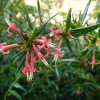 Based on years of UF/IFAS research producing and trialing cultivars, this 5-page fact sheet lists native and non-invasive, non-native ornamentals as alternatives to invasive plants commonly used in Florida landscapes. Only plants considered to be generally available in the nursery trade are listed. Alternative plants are similar to respective invasive plants as much as possible in terms of size, habit, texture, and flower color. Written by Gary W. Knox, Sandra B. Wilson, Zhanao Deng, and Rosanna Freyre, and published by the UF Department of Environmental Horticulture, September 2013.
Based on years of UF/IFAS research producing and trialing cultivars, this 5-page fact sheet lists native and non-invasive, non-native ornamentals as alternatives to invasive plants commonly used in Florida landscapes. Only plants considered to be generally available in the nursery trade are listed. Alternative plants are similar to respective invasive plants as much as possible in terms of size, habit, texture, and flower color. Written by Gary W. Knox, Sandra B. Wilson, Zhanao Deng, and Rosanna Freyre, and published by the UF Department of Environmental Horticulture, September 2013.
http://edis.ifas.ufl.edu/ep483
Spanish Moss, Ball Moss, and Lichens – Harmless Epiphytes
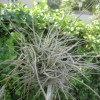 Epiphytes are “air” plants that survive on moisture and nutrients in the atmosphere. Several epiphytic plants, like Spanish moss, ball moss, and lichen, are common to the Florida landscape and southeast United States. People unfamiliar with epiphytes sometimes worry that they may cause injuries to the plants they perch in. Epiphytes do attach themselves to plants, but they do not harm the plants, unlike mistletoe, a plant parasite. Without soil as a source of nutrients, epiphytic plants have evolved the capacity to obtain minerals dissolved in water that flows across leaves and down branches. This 3-page fact sheet was written by Joe Sewards and Sydney Park Brown, and published by the UF Department of Environmental Horticulture, September 2013.
Epiphytes are “air” plants that survive on moisture and nutrients in the atmosphere. Several epiphytic plants, like Spanish moss, ball moss, and lichen, are common to the Florida landscape and southeast United States. People unfamiliar with epiphytes sometimes worry that they may cause injuries to the plants they perch in. Epiphytes do attach themselves to plants, but they do not harm the plants, unlike mistletoe, a plant parasite. Without soil as a source of nutrients, epiphytic plants have evolved the capacity to obtain minerals dissolved in water that flows across leaves and down branches. This 3-page fact sheet was written by Joe Sewards and Sydney Park Brown, and published by the UF Department of Environmental Horticulture, September 2013.
http://edis.ifas.ufl.edu/ep485
Green orchid bee Euglossa dilemma Friese (Insecta: Hymenoptera: Apidae)
 Green orchid bees are a quite conspicuous and charismatic species. This is mostly due to their large size and bright metallic-green coloration. They are very fast and agile flyers, and can be seen quickly darting from flower to flower separated by long periods of hovering. Male orchid bees collect fragrant volatile compounds from their environment and present them to females by fanning their wings and “spray ventilating” their bouquet for the inspection of prospective mates. In Florida, male green orchid bees are attracted to chemicals produced by certain wood-rot fungi, decomposing vegetation, perfume flowers, and certain essential oils such as clove and cinnamon oil. Male green orchid bees can be quickly and easily attracted and observed by soaking a small piece of paper with clove oil and placing it outside. This 4-page fact sheet was written by Aaron Mullins, and published by the UF Department of Entomology and Nematology, October 2013.
Green orchid bees are a quite conspicuous and charismatic species. This is mostly due to their large size and bright metallic-green coloration. They are very fast and agile flyers, and can be seen quickly darting from flower to flower separated by long periods of hovering. Male orchid bees collect fragrant volatile compounds from their environment and present them to females by fanning their wings and “spray ventilating” their bouquet for the inspection of prospective mates. In Florida, male green orchid bees are attracted to chemicals produced by certain wood-rot fungi, decomposing vegetation, perfume flowers, and certain essential oils such as clove and cinnamon oil. Male green orchid bees can be quickly and easily attracted and observed by soaking a small piece of paper with clove oil and placing it outside. This 4-page fact sheet was written by Aaron Mullins, and published by the UF Department of Entomology and Nematology, October 2013.
http://edis.ifas.ufl.edu/in1013
Ladybird beetles – recent immigrants to Florida (Insecta: Coleoptera: Coccinellidae)
 Since the publication of the Florida beetles checklist, a few ladybird beetles have become established in the state, some well-known and extensively documented and some little noticed and previously unreported. It is these latter species that are covered in this publication. All of the listed species are represented by voucher specimens in the Florida State Collection of Arthropods. Species previously known from Florida are reported by Frank and Mizell (2012) with emphasis on natural history. This 5-page fact sheet was written by Michael C. Thomas and Orland J. Blanchard, Jr., and published by the UF Department of Entomology and Nematology, October 2013.
Since the publication of the Florida beetles checklist, a few ladybird beetles have become established in the state, some well-known and extensively documented and some little noticed and previously unreported. It is these latter species that are covered in this publication. All of the listed species are represented by voucher specimens in the Florida State Collection of Arthropods. Species previously known from Florida are reported by Frank and Mizell (2012) with emphasis on natural history. This 5-page fact sheet was written by Michael C. Thomas and Orland J. Blanchard, Jr., and published by the UF Department of Entomology and Nematology, October 2013.
http://edis.ifas.ufl.edu/in1012